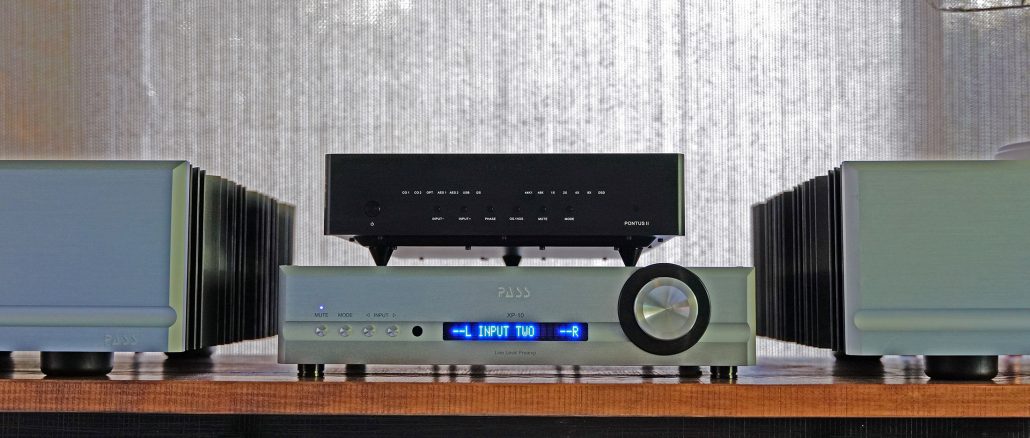
The Denafrips Pontus II DAC Review. HiFi Gold.
By Steve Huff
UPDATED 10/31/2021
I have just had some time with a HiFi audio piece that shocked, shook and startled me for what it cost in todays high end HiFi world. It also made me realize just how good DAC’s have become over just these last couple of years. It also showed me there is no need to spend more than this for a DAC unless of course you want to wring out that last 5-10% of performance from your audio system. This one is a stunner my friends.
The Video Review
Speaking of fine DAC’s, I recently reviewed the tube based Lampizator Amber 3 DAC and loved it for its smooth sound, musicality and natural warm leaning presentation. As of the start of this writing I still have the Amber 3 in my reference system but have been recently auditioning the Denafrips Pontus II DAC and I have been (really) enjoying the much different sound presentation it has been giving me over the Amber 3.
I will talk about this sound I get from the Pontus II in this review but believe me when I say that this DAC has changed my belief system about what can be had from a DAC in the under $1700 US price point.
During my several week evaluation I listened to this DAC with various speakers including Fleetwood Deville’s, Klipsch LaScala, Klipsch Heresy IV, Klipsch Forte IV, Dynaudio Heritage Specials and Wharefedale Diamond 225’s. The source is a Lumin U1 Mini along with Tidal. Qobuz and Spotify. I am using Pass Labs Amplification and Cardas Cabling.
Since I am not a technical kind of guy You can read more technical info about this DAC HERE at the Denafrips website.
I have also been comparing the Pontus II to one of my older favorite DAC’s, the $1700 Chord Qutest DAC. The Pontus II delivers quite a different sound signature over that wonderful little hunk of metal as well.
The truth is that most all products in HiFi offer something different when you add it to a highly resolving system, even cables. But remember, different doesn’t always mean better and crazy high prices do not always mean better either. It all comes down to what your ears enjoy with music reproduction.
Some like it hefty and mean while others like it detailed and lean. Some like the top end sparkly and sweet while others like midrange with meat. I’ll end the rhymes here but in the end we all have different tastes and in my experience a DAC can make a small change or a rather large one. This Pontus II DAC brought a huge change to my system. I will start with that.
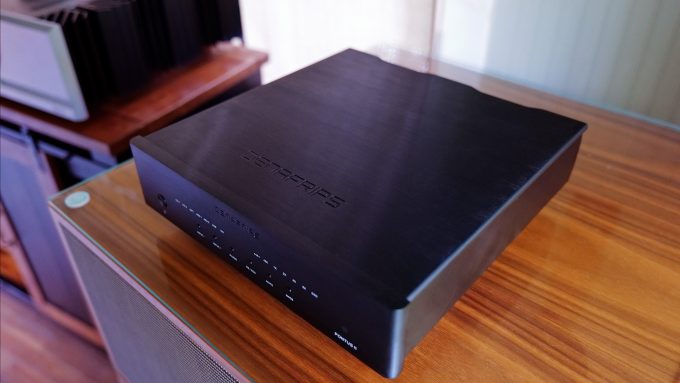
The Denafrips Pontus II
From the Denafrips Website:
OH, and IT”S BUILT LIKE A TANK!
The chassis is made of massive aluminum plates and securely fastened with internal brackets. It’s smooth and high end looking as there are no visible screws or bolts to be seen on the top or sides. The all-aluminum enclosure also helps with shielding and vibrations. Things the high end obsessed customers look for indeed.
The Pontus II is a R2R Ladder DAC, so it does not sound like a traditional DAC that uses traditional chips. For example, like those from ESS or Sabre. This DAC is also different in sound from the FPGA Chord DACS. There are many fans of R2R Ladder DACs and one that is quite popular is the Schiit Audio YGGDRASIL that comes in at around $2200-$2400 US depending on your options.
I have heard the OG YGGDRASIL and enjoyed it at the time but never did get around to a long term audition. At the time I wasn’t into the uber detail it was providing. I also heard a slight digital edge and grayness from that OG Schiit. Even so, that DAC has a huge fan base and is considered one of the best bang for the buck DACs around by many HiFi fans. Again, teh sound you get from any dac will depend on the system you insert it in.
From the Denafrips website:
“The PONTUS is true balanced, dual mono R-2R network arrays DAC. Each channel is equipped with independent high-speed FPGA to control the decoding by means of 4 sets of 0.01% R-2R network. This design has very small linear error, high decoding speed, low digital noise, not only to ensure that the audio signal is low distortion, but also to ensure a very low background music noise; allow listener to enjoy the true music with dark background.
All digital input are FIFO buffered and reclocked by the on board FEMTO clocks. The excellent rejection of word-clock jitter makes DENAFRIPS DAC less reliance to the source equipment clock quality. PONTUS can transform your consumer grade computer, CDPlayer to high-end sound quality.”
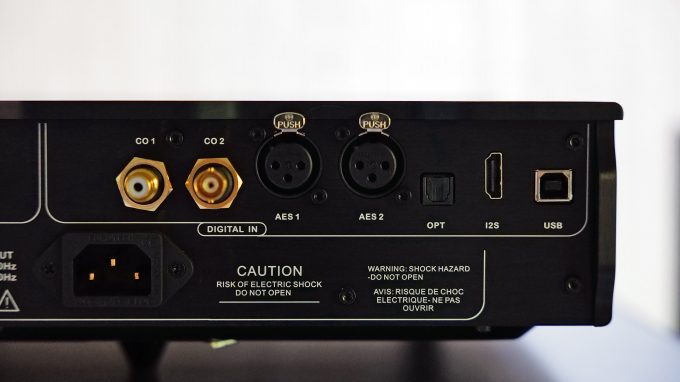
Denafrips have been getting some great press
Just recently I have been hearing some pretty exciting rumblings about a couple of the DAC offerings from this company called Denafrips. Their starter DAC called the ARES II comes in at only $1098 and has been the favorite among many music lovers in this price range and slightly above it. So I was excited when I received an email from Vinshine Audio asking if I wanted to review the Pontus II, the next DAC up the ladder from the ARES II.
I have heard a few DACs up to the $6500 price point.
My Lampizator Amber 3 is near $5k these days and is a tube based design. It offers a fluid, warm and rich sound that is very musical within my reference system, which leans warm as it is. The Lampi is inviting yet doesn’t wow you up front with that airy 3 dimensional sound. It’s more direct and more tube like as you would expect but also has some transparency as well. It sucks you in over time with its addicting sound. The Lampizator is a beauty in how it sounds but I have to say that the looks are quite ugly, as I stated in my review.
Other favorites in my system have been the Chord Qutest and the PS Audio Directstream DAC both of which are lovely detailed music makers.The PS Audio is more transparent and the Chord is more beefy and textured. The Pontus II lies somewhere in between them in sound signature (which is a good thing).
The Pontus II comes in at only $1700 US
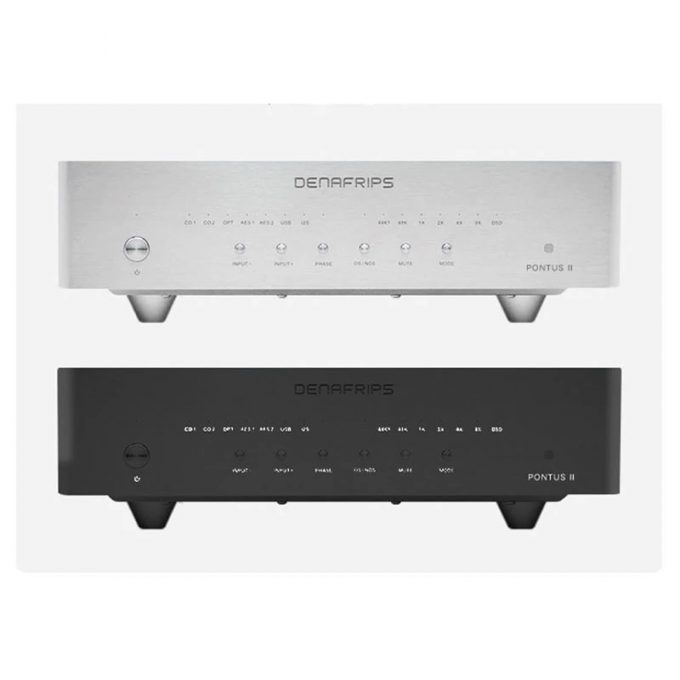
DACS DO MAKE A DIFFERENCE (In Some Systems).
If you are reading this thinking DAC’s do not make much of a difference in a well tuned audio system this is simply not the case in 2021. In a higher end revealing system a DAC can actually bring a system to life or even dull it down. Synergy is key as always in HiFi and that is the trickiest part when assembling a system but I see the DAC as the final piece of the puzzle within a digital system. It’s more important than the streamer and is what decodes those digital signals that get sent to your pre-amp.
In a low to mid-fi system a fancy pricey DAC is not worth a purchase as most of what it brings to the sound will be lost with muddled speakers, or mid end receivers or integrated amps. There would be no “night and day” difference. If I just had something like a PS Audio Sprout and some Klipsch Bookshelf Speakers I would not invest in an external DAC. On the other hand, in a system that set you back say $6k and up a great DAC can truly be the final piece to your digital music puzzle that adds that something special to the sound.
These days, DAC’s are an important part of any higher end system, period. But this wasn’t always the case.
I remember when most DAC’s sounded sterile, flat, or strident. It was not that long ago that a DAC that would set you back $1500 or so would sound very digital. When a really great DAC came around reviewers would tout that DAC as “Analog Sounding” mostly because the digital nasties would be gone, giving a nice smooth, fluid analog type of sound.
Back when I was in my 20’s I bought CD players for the DAC inside of them as not all of the CD players were created equal. I remember having an old Pioneer Elite model with the wooden sides. It sounded glorious for its time and it was known for its DAC. The DAC is what made this player special and coveted. I do not remember the model number but it was a lovely disc spinner indeed.
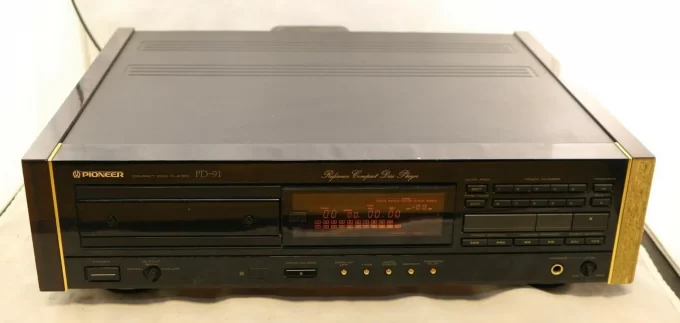
For me a DAC just as important as an Amp or Pre Amp or even Speakers when I assemble a nice system.
To see a list of the complete specs of the Pontus II DAC Denafrips has a lovely page to see them all in one place. To be honest, I am not a spec head. I go by sound, build and reliability when I shop for (or review) a piece of HiFi. If a DAC plays high res files, can handle Tidal HiFi/ROON, sounds beautiful, is made to a high standard and is priced right then I am all in. On paper the Pontus II appears to have all of this in a DAC.
OK, enough of my yapping, let’s get to the sound of this DAC.
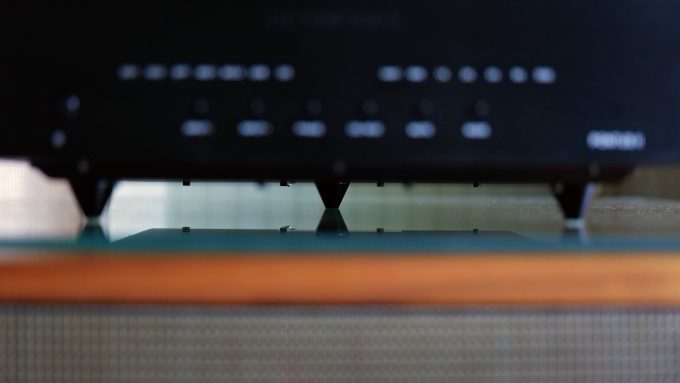
I was listening in the morning to my reference system with my Lampizator Amber 3 when the Fed Ex guy dropped off the Pontus II. I immediately ran out to the porch to grab the box and brought it in to my listening room. I unboxed it and placed it into the system, removing the Amber 3 out of said system. This Pontus was a new in box DAC and needed 10 days or so to burn in before critical listening would take place.
I was immediately in awe of the build quality and sweet sleek all metal design. At 18lbs it is a beast of a DAC and like none other I have seen at this price point.
Even though it was brand new and out of the box I could not resist sitting down and giving it a listen immediately. C’Mon, you know we all do it. No need to wait ten days. Sit back, crank it up and enjoy the process.
SHOCK!
When the music started I was literally in a little bit of shock. It sounded so much different from the Amber 3 that I had just been listening to moments before. If I had to compare what I heard when going to the Denafrips DAC it was like a light was switched on and there was an immense amount of information being thrown out at me. Clarity was up, air and decay was up, dynamics were way way up, imaging was more locked in and noise was down.
The Pontus II has a 3 dimensionality that was as impressive to say the least. The air and detail was on a new level from what I have heard prior. With all of this there was a nice level of musicality. It was never dry or etched. It was never thin or bleached. It was alive and ever so slightly warm and meaty.
The kicker? I was streaming Spotify at this point! Nothing fancy, nothing high res (yet) and yet it sounded very nice indeed.
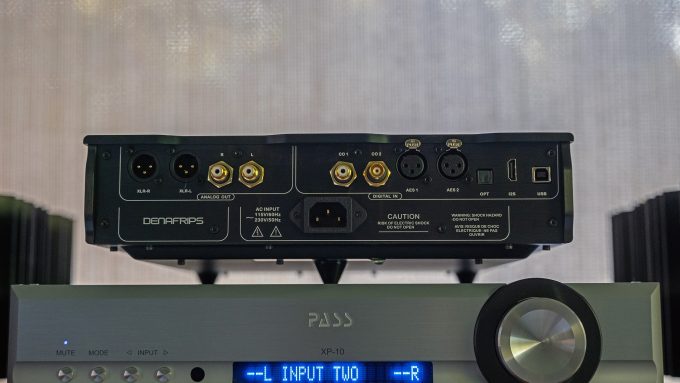
There are Two Modes
On the front of the Pontus II you have a simple display with red lights. The lights show you what the sample rate of the music is that is currently being played. There is a button that allows you to turn on or off oversampling. When the LIGHT IS ON you are in NOS mode. When it is OFF you are in OS mode.
In NOS mode which stands for NON OVER SAMPLING (light on) there is no oversampling happening and you get out what you put into it.
In OS (oversampling) mode (light off), the PCM 44.1kHz or 48kHz based audio data are up-sampled to the maximum rate of PCM1411.2 or PCM1536. There is no up-sampling of a DSD audio signal.
I preferred the NOS mode with my system by a large margin as in this mode it seemed a tad warmer and more “human”. It sounded less digital and more analog. With OS on I was hearing more details, air and expansion of the soundstage width and depth but it seemed more musical and natural to me in NOS mode. It’s nice to have this feature and can help you fine tune it to your ears and system.
There is also a filter setting that you can change within the configuration mode that you access with the front buttons as well. I set it to the “Slow” filter. You can see the manual for the Pontus II HERE as it explains everything. There is no remote with this DAC as it is not needed.
It was jaw dropping at just how different this Pontus II sounded from my other DAC’s. I could not believe this as I love the Amber 3 but I have to be honest here. The Pontus II was delivering musical details to me in my system at a level quite a bit above the highly regarded Amber 3. Even so, this doesn’t always mean better as it depends on the sound signature that you enjoy.
I can say the Pontus had a much wider soundstage, was more transparent, was dead silent, had more low level detail, a beautiful midrange and was built better. It looks nicer, weighs more and is made of superb quality. The midbass was a bit stronger/meatier on the Lampizator as was the “plumpness” of the sound and in some ways, the human voice. The Pontus brings out a little bit of a faster and more dynamic presentation which can make you stand up and take notice with some tracks but it is also super refined and smooth. I have to repeat, there are no signs of digital nasties. No sibilance, no edginess, no smearing and it doesn’t sound flat in any way.
While I loved listening to the Amber 3 in the wee hours of the night, the Pontus became like an addiction for me night after night. The music became electric yet at the same time there was a superb smooth rhythmic flow that had me tapping my feet and reveling in the instrument separation that was taking place. Again, the beauty was that it was doing this without sounding thin or bright.
The imaging performance was stellar with all instruments and voices in their perfect place in the soundstage. As for the soundstage? It was as wide, deep and tall as I have experienced in this room and this was all before the DAC had its 10 days of running in. I have to say though that most products today can deliver a nice soundstage width and depth so this is nothing special or unique to the Pontus. Rather what the Pontus does within that soundstage is what makes it special.
As much as I was enjoying the Pontus I knew I had to review it so to do that I had to compare it to other DAC’s I had on hand. I also had the Chord Qutest and the Lampizator.
The Qutest? I have always enjoyed it. The Lampizator? Same thing. But which one of these three would be my choice?
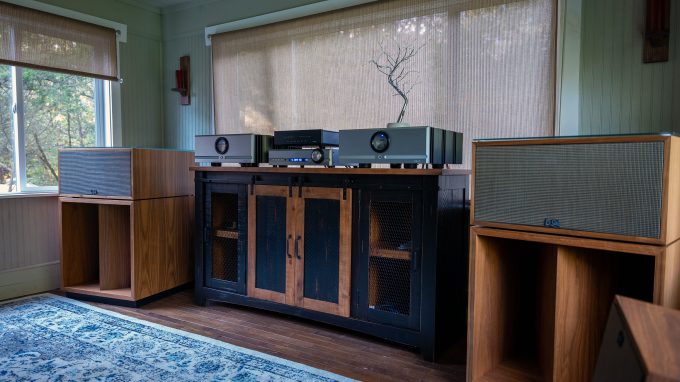
The Three Way Audition
After about 10 days with the Pontus II in the system I wanted to put in the Chord and Lampizator again to make sure what I was hearing was not “new gear syndrome”. You know, when you get a new piece and love it to death for a while, then tire of it? Lol. It happens to 90% of us in high end audio. It’s what keeps audio dealers in business.
Upon placing the Qutest back in I noticed a difference from the Pontus II immediately. The Chord is tiny and small but well made. I was running it via USB (same way I was running the Pontus II). I have had the Qutest long term and have come to enjoy its unique presentation.
The Qutest has a way of bringing texture to the sound. It’s not the last word in mid bass or midrange performance but for the money it is a solid choice. The Qutest brings out details nicely and with sweetness yet it doesn’t have the widest soundstage or best imaging performance. It’s not thin but it’s also not huge sounding. It has a special way of arranging the music and for the cost it is a solid option.
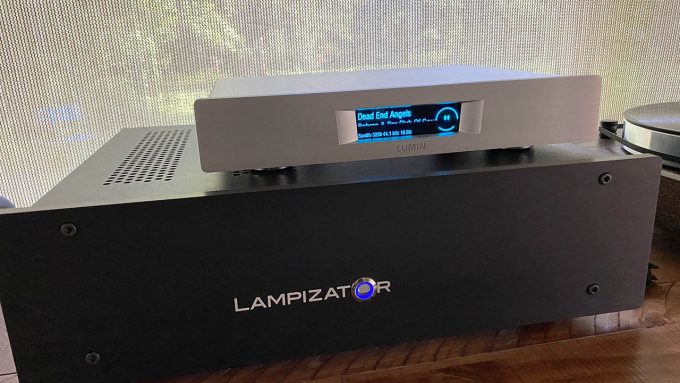
The Qutest vs the Pontus II? With the Chord I lost out on some soundstage width, depth, imaging and transparency vs the Pontus II. The Pontus was more airy and “see through” but a little more balanced than the Chord. The Chord was a little flatter sounding in comparison. If I did not hear the Pontus II I could have been forever happy with the Chord. The thing is, I heard the Pontus II and enjoyed it more than the Chord.
The Lampizator Amber 3 is the much more expensive DAC and it was completely different from the Pontus II. The Lampi had a fuller sound, bigger mid bass and was less transparent, less airy and not as 3 dimensional as the Pontus II. Also, it was not nearly as dynamic as the Denafrips DAC. It also had a teeny bit of noise that comes from the unit itself.
The Lampizator has a gorgeous sound and in my system allows almost anything I play through it to sound big, fat, bold and musical. It doesn’t have the imaging performance of the Pontus II nor the 3 dimensional “hanging in the air” sound to the same extreme as the Denafrips does. What it does have is a bigger, fuller midrange which makes voices sound hauntingly real. I love that.
The Pontus II has an ever so slightly leaner midrange and specializes more in the detail retrieval department along with a dose of beauty and realism. Some would prefer the Lampizator and others the Pontus. Depends on your tastes.
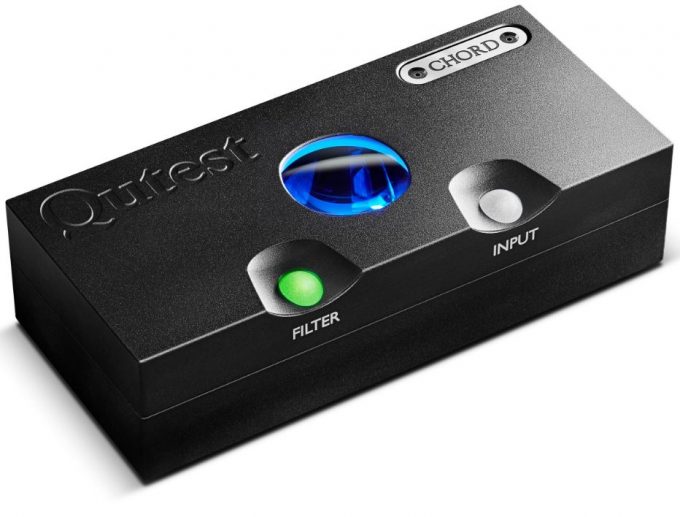
HOW REVEALING IS YOUR SYSTEM?
The more resolving or higher end your music system the more differences will be heard when changing things out such as DACS, cables or streamers.
My reference system today consists of Klipsch LaScala AL5 Speakers (review), Pass Labs XP10 and Xa60.8 Class A Monoblock Amplifiers (review), Lumin U1 Mini Streamer (LOVE this streamer) along with beautiful Cardas Clear Reflection Cables (review). I could clearly hear the differences between all three of the DAC’s I had on hand.
Each have their own kind of sound and way they reproduce the music in your space.
The Lampizator is warmer and inviting but less exciting and dynamic. The Chord has punch and slam but can be thinner sounding compared to the Lampizator. The Denafrips Pontus II is a different kind of DAC and brings the detail. dynamics, and room filling soundstage with all of the audiophile tricks yet never sounds bright or edgy.
The Pontus II does walk a fine line as it somehow finds a way to bring those details, micro details and magic without being analytical. It is indeed a fine line though as I feel any more of this goodness would make the DAC too much of a good thing. In my slightly warm leaning system it is a killer DAC that brings the most from the music I listen to. I can get lost in the beauty of the music for hours on end when listening and that my friends says a lot. Denafrips have created a gorgeous DAC in the Pontus II.
Placing in Dynaudio Heritage Specials, Wharfedale’s and Heresy IV.
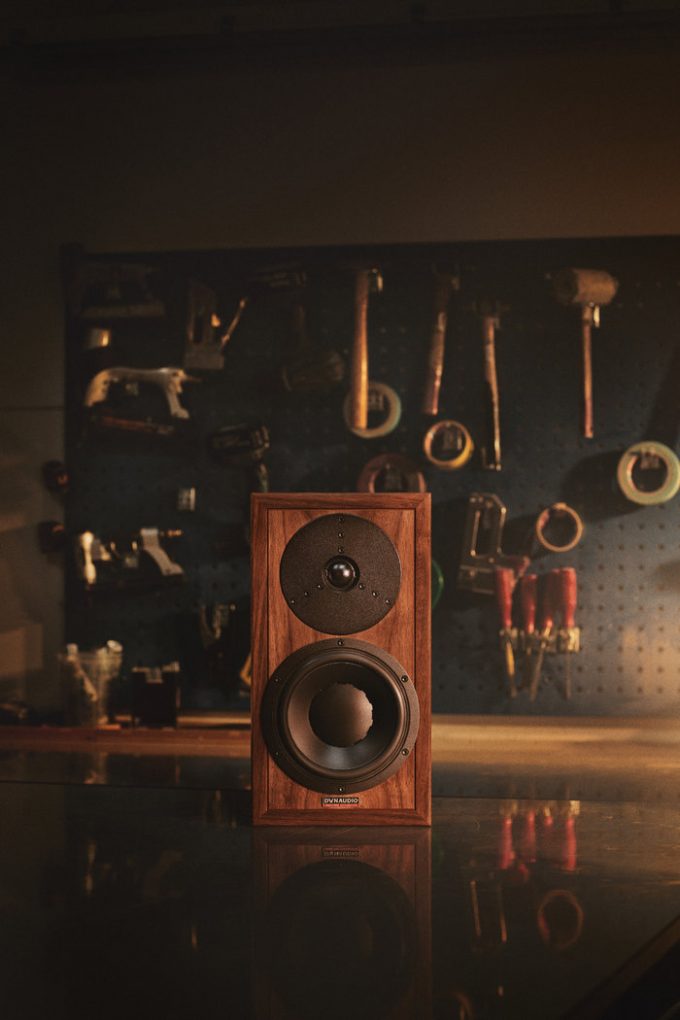
When I placed in Dynaudio Heritage Specials (review) into the reference room the sound shrunk big time from my LaScala’s but I gained a richness and immediacy that the Klipsch’s can’t muster. Meaty, full and with beautiful bass the Heritage Specials are tremendous speakers. The Pontus II sounded absolutely on point with them. I preferred the Pontus to the Lampi and the Chord as it still delivered that air, magic and depth that it did with the Klipsch. NOS mode all the way.
Placing in the Wharfedale Diamond 225’s (review) even had me shaking my head in disbelief as I paid $250 for these speakers. When placed in with the high end cables, amplification and streaming they sounded like $2000 speakers. The Pontus II sounded really good with the low cost Dimaonds and brought them to life better than the other two DAC’s. They sounded dull with the Amber 3 and a little sterile with the Chord. Amazing that cheap speakers can sound this good when the upstream gear is fantastic.
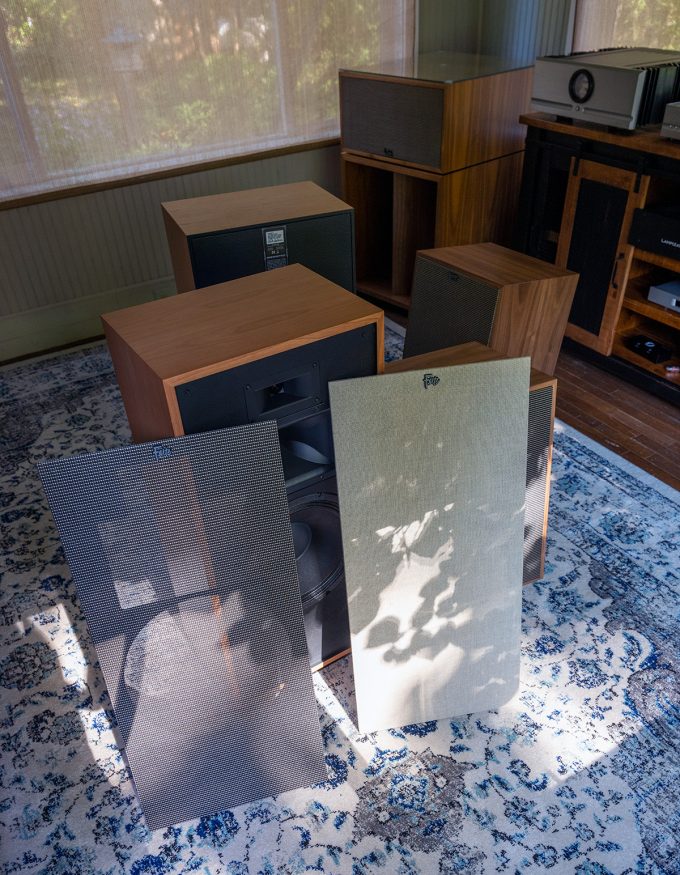
I then decided to pull out the Heresy IV’s. These just sounded fantastic. Warm, big and delicious. These are my favorite speakers at their price point. They were dynamic, detailed and lifelike.
My two faves were the Fleetwood’s and Dynaudio.
BTW, if you are looking for a great Klipsch Heritage Dealer click HERE. Seriously. Give ’em a call for prices if you are looking for Klipsch Heritage. Best prices, shipping and in-stock I have seen for Klipsch Heritage speakers.
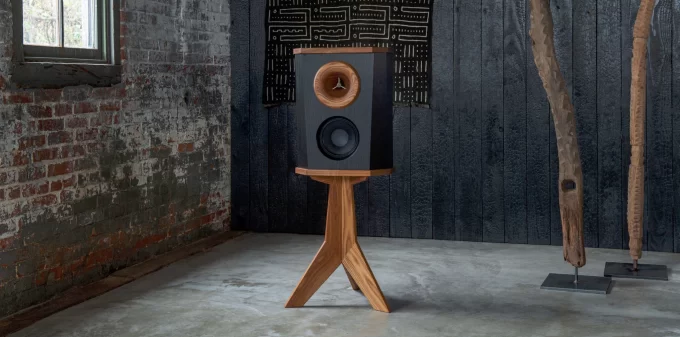
LISTENING to the Fleetwood Deville’s with the Pontus II was a treat. The sound of these speakers is extraordinary. Beautiful. Sweet. With soul, magic and a wall to wall 3D warm sound. The Pontus added meat to the mids, transparency to the highs and thunder to the bottom end.
This was hands down the best of the lot for me. These $14k speakers were right at home with the Pontus II. They lost some of their magic with the Chord Qutest. Drums have slam. Piano has serious weight,. Guitars have meat and detail. Vocals are life sized.
Tidal HiFi Listening Notes
As one would expect, when I loaded up Tidal HiFi things got even better than with Spotify. I have subscriptions to Qobuz, Tidal and Spotify. To me Qobuz sounds the best followed by Tidal and then Spotify. I use them all.
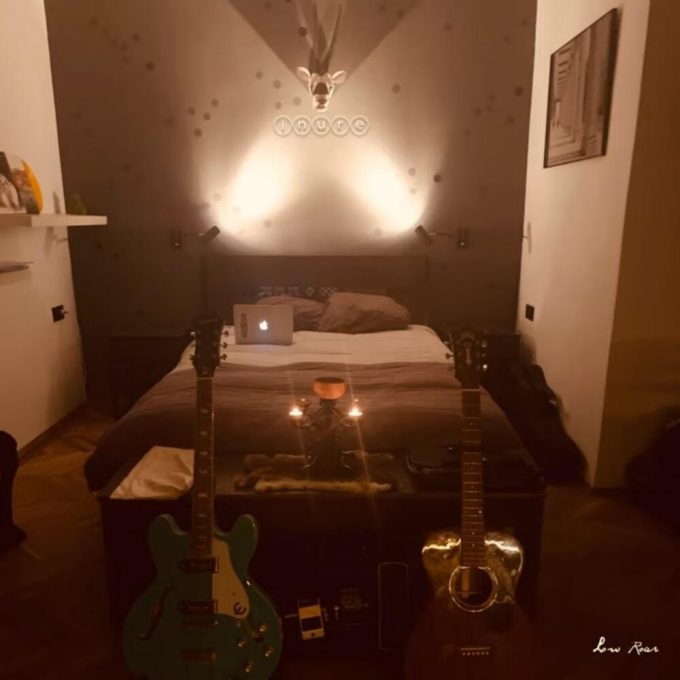
Listening to Low Roar’s “Do you miss me” though Tidal HiFi brought a soul touching experience with the Pontus II. The vocals were hauntingly real. The music was spread around the room and gave me one of those “walk into the sound” moments. I love this song as it has so many layers and so much going on yet it is beautiful and haunting at the same time.
With the Amber 3 it was darker and I missed out on some of the sparkle and low level details that makes this song shine though it still sounded beautiful with a richness and suppleness that I assume comes from the tubes inside of the Amber 3. With the Qutest I had no complaints but it could not muster the transparency and air that the Pontus II was bringing forth.
The Denafrips DAC brought amazing life to this song and fleshed it out every nicely. It allowed me to enjoy every single instrument used and as stated, the vocals were absolutely gorgeous. This is one of those songs you listen to at 1am, in the dark while sitting in the sweet spot.
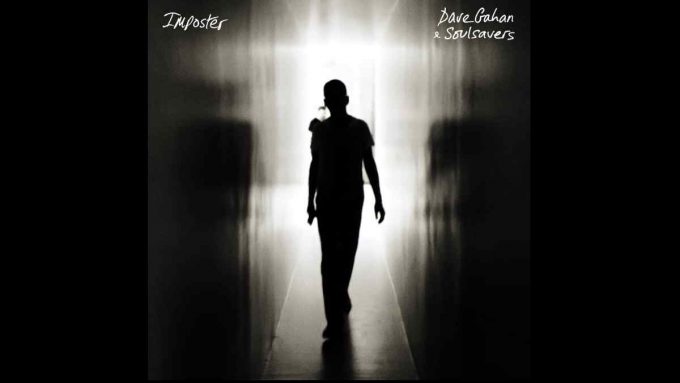
Listening to “Metal Heart” from Dave Gahn and the Soulsavers was beautiful. Here, the vocals sounded insanely HUGE and IN THE ROOM REAL and gave me goosebumps. This is one song that sounded jaw dropping through the LaScala’s as the vocals were just eery with those speakers. I mean, goosebumps territory.
I was listening at midnight and every aspect of the musical performance was delivered in such a fluid and real way. It did in fact remind me of analog but without the hassle of analog. THIS IS HIGH END SOUND my friends. The dynamics were top notch. This song has moments of softness and moments of HUGENESS. The Pontus delivered the goods yet again.

James Blake’s “Famous Last Words” is a superb recording. His albums always sound amazing through a great HiFi system. The Pontus II excelled here with vocals, and those micro details that we often miss in songs yet it was full, big and had no hint of brightness or leanness. The Dynaudios excelled here along with most of the speakers but there was something special going on with the Heritage Specials. James Blake always has some serous bass going on and these speakers can deliver it nicely.
One thing that the Pontus also does is reveal the truth. It is among the best I have heard when feeding it great recordings but feed it garbage and it will bring you garbage in return. This will not put a shine on thin 80’s digital recordings.
Listening to the new James Blake album made me appreciate what this DAC was doing. No other DAC I had here brought the air, depth, soundstage or floating details of the Pontus II to these tracks. I sat and listened to the entire album and I am not really a huge James Blake fan!
The imaging is so fantastic. The music comes at you from all sides bringing you into the performance and while other DACs can do this most of them cost more than the Pontus II. Some can do it better but expect to pay up to $10k to get there.
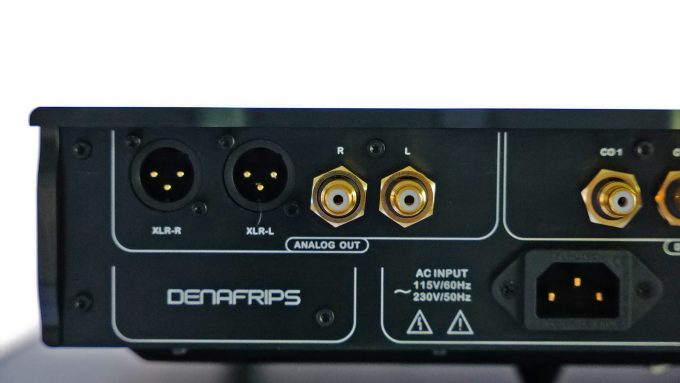
CONCLUSION
The Pontus II DAC delivered the goods in my system in so many ways. It was detailed yet smooth and never offending. It brought forth micro details with magic and air. It kept the bass tight, tuneful and solid and while there was no midrange hump here, it offered up a clean transparent sound like few others I have heard. It managed to do this without ever sounding bright or analytical. Amazing.
The Pontus II is musical as all get out and at times reminded me of a truly great analog front end but without the grit, crackles, cost and hassle. After 3 weeks of use from new it sounded warmer, fuller and yet it remained insanely transparent.
The soundstage was as wide and tall as I have experienced in DAC’s up to $5k yet it comes in at $1700 US.
The Pontus is for those who want clear, clean, detail along with transparency, holographic imaging and a nice body to the music without it being overly bloated in the midrange. It is for those who want the truth, the best from good recordings. The Pontus II has a way of doing all of this without sounding digital or overcooked. It walks that fine line with ease and yet it never crosses it.
I ended up preferring it to my Amber 3 and Chord Qutest after weeks of listening but I have another DAC on the way to test soon so the fun will continue.
But so far this is the best DAC I have ever experienced in my audio journey. Many DAC’s have come and gone, some without a review (when I do not care for an item I do not review it). The Amber 3 and Qutest were two that stuck as they are fantastic but the Pontus II did beat them in my system. I know there are DAC’s that can beat the Pontus but one thing we should ask ourselves is “How much better do we need or want”?
I believe to improve upon this DAC one would have to spend a few grand more. Even jumping up the line in the Denafrips family may only bring more detail and refinement, and that may be what you need depending on your setup. The Pontus II fits in perfectly with that. I think the Terminator may bring some more beauty to the warmer leaning Deville’s and the Pontus II is a great match for the Klipsch.
The build of the Pontus II is also the best I have seen at this price point (or any) and I am not kidding. It’s as solid as any DAC has a right to be and at 18lbs you will know this is soon as you take it out of the box. I know of an over $10k DAC that doesn’t have this level of build quality. It did have some sort of glue residue at the bottom which I wiped off but this is a DAC that is built very nicely inside and out.
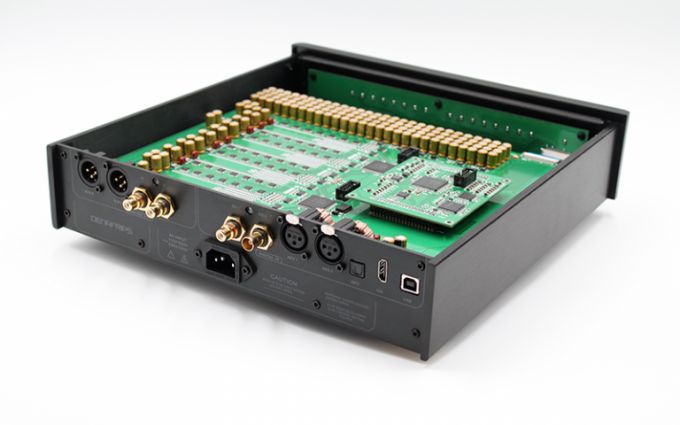
The backgrounds are black as night and this is partly why the music jets out with such realism and transparency. This is a true bargain in the realm of high end DAC’s. If it were $5k I would give it a positive review and say it was priced right. As it is, the cost is $1700 and that my friends is remarkable. This could be an end game dac for many out there, no matter the cost of your system. That in itself is remarkable. I inquired about buying the review unit. I just don’t know how a DAC can get any better (though I know they can).
HIGHLY RECOMMENDED if you have a mid to high end system and want a realistic smooth yet detailed sound that brings forth all of the information recorded in your music.

MORE DETAILS OR BUY!
You can read more about the Pontus II DAC or can order one for yourself HERE. It comes in silver or black. My review unit came in black but I feel the Silver is GORGEOUS!

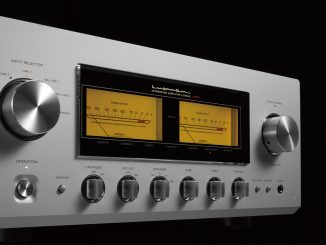
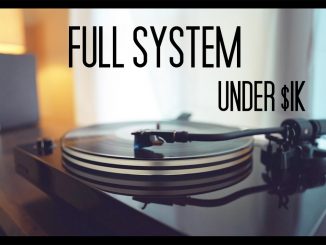
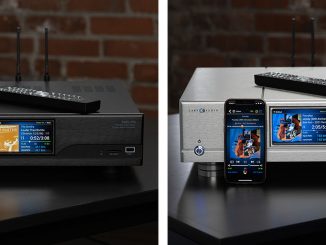
Hi Steve – I just found your YouTube and website reviews recently and really appreciate them. Thank you! I currently use Roon (iMac core) to feed a Bluesound Node that streams into a Chord Qutest > McIntosh MC352 > Sonus Faber Olympica Nova II or Focal 1028S (depends on my mood for the speakers). My cabling is all Cardas Clear Cygnus. Overall, I just feel something is lacking with the Qutest. I think it’s that emotional piece you and others have spoken to. I listen to a wide range of music but gravitate most heavily towards indie, acoustic, vocal centric music (40% there, 60% all else combined). You had good things to say about the Pontus II and the Cary DMS-650. Comparing the two, what are your thoughts on the sonic signatures especially considering my system and feedback on the Qutest? I would like to audition both but the Pontus II cannot be returned and the Cary has a 3% CC card fee charge if returned. The Cary is much more expensive considering that it includes the Network Streaming gear as well. I can accept the higher cost if it delivers the sound I want: a clear step change from the Qutest. I want to be immersed in a live performance if that makes sense. I can take a chance on the Cary and pay the 3% fee if I return. For the Pontus, there is no returning so that is a big commitment up front. Just curious if you have a clear opinion of how they differ? I would appreciate your response whether here or emailed directly. Thank you!
Sent ya an email!
Steve, I just ordered a new Pontus ii 12ed and picked up a mint Lumin U1 mini, I am copying your digital front end. I love you videos and trust your opinion. I can’t wait to hear the combo.
I was running Roon Core on a headless Mac mini SSD with Audioquest Carbon USB directly into my Parasound P6, sounded good but not very analog. I love the smoother analog sound that my Rega TT brings and I am hoping the DAC/Streamer will bring that to my P6/A21/ML Motion 40/Twin Stereo REL T5 system.
do you prefer the The Denafrips Pontus II over the Lampizator Amber ?
The Pontus II has a sound that is more dense, with a gentle detail retrieval. It has transparency and body and it is a touch laid back. The Amber, in comparison, was more forward and a little more lit up in the treble. Would depend on your speakers/amp.
I’m new to digital audio in general. I was searching for a streamer + DAC combo and your review of the Pontus II pushed me over the edge into clicking the buy button. I also have a U2 mini in route and didn’t realize that you were using a U1 mini. I have a couple of questions if you have a moment:
1. Do you have a preference on interconnect between the U1 mini and DA? I’ve ordered a USB cable, but don’t have any of the others. I’d rather not buy every type to try myself if there’s a clear winner.
2. The Lumin has a number of resampling settings that are meant to be optimized based on the DAC that is being used. I honestly have no idea what any of this means. I’ll primarily be streaming via Qobuz and using my own digital library. Do you have suggestions on how to set this up or would you recommend just leaving resampling off?
3. My set-up will run Lumin U2 mini into Pontus II into Rogue Cronus Magnum III integrated amp. Will I end up using the digital volume control on the Lumin, the volume control on my amp, or have a choice? If the latter, what would you choose?
Thanks!
I used a Lumin U1 mini with an Audioquest Diamond USB to the Pontus II. That was fantastic. I would leave upsampling off on the Lumin and let teh DAC do its thing. I would also use the volume on your amp, not the Lumin. I set my U1 to fixed volume and allowed the amp/pre/integrated to do the work there.
Hi Steve, thanks for your comprehensive and well-written review. I read it after a friend told me about her new Pontus II – suffice to say, you are both on the same proverbial page. I am currently using a Cambridge Audio CXN v2 in pre-amp mode, with Kimber Silver Streaks out to a Rogue Audio Atlas Magnum III, bi-wired with Kimber 8TC into B&W Signature 805’s… A moderate setup that sounds pretty nice for everything that is, or not. The CXN uses dual Wolfson DACs, and I am considering a Pontus via digital coax (only available out to bypass the Wolfsons). Any thoughts?
Down the line I’m considering replacing the CXN with a Lumin U2 Mini which would provide Leedh Processing digital volume control and MQA (not present on the CXN), so that I could eliminate any preamp stage. And it would allow USB or AES out to the Pontus…
I just got my Pontus ii a couple of weeks ago, and at first I was like ok, and figured lets see if it does change it sound. I listened every night to the same songs and sure enough it changed…sometimes some things would be better and some things would sound really off. Well today I turned it on and EVERYTHING sounded great! Now I have to decide if i want the get the DD or get a nice streamer (currently I am using Windows Roon as a core and Roon Rock as a endpoint both of which are on i5NUCs).
Side note: I watch your Youtube videos all the time and love your LaScalas and have had several over the years since 1980, and now I have K402 MEHs in each corner of a 19′ wide room (over 20,000CF)…just like Khorns are. Anyone who says horns hurt their ears needs to listen again IMO.
I took my chance after reading this and some other reviews. The Pontus ii is still not working well after a month. Did as told a firmware upgrade but still experiencing distortion while playing via coax or usb. Just wondering how you got the perfect one while service support asks me to wait for another firmware upgrade?
I have a few friends who own the Pontus II and have no issues at all. I have not heard of the issue with distortion, nor have I experienced it with the Pontus II or Terminator II I am reviewing now. How are you connecting your source to the DAC? What type of cable? What is your source/streamer? Thank You.
Hi Steve, I bought a netfilter, use transparant powercords and checked my interlinks. I use a classé cd player with coax interlink and a fanless minipc (Jriver, foobar Audirvana apps) with audioquest jitterbug/audioquest coffee usb cable. My previous dac is m2tech young, no issues then. On both input randomly, now and then, audio crackles, on usb input more than on cd.
Are you looking to sell the Pontus II ? Sounds like maybe you are going to upgrade to the next model? If interested in selling let me know what you would have to have for it.
My DAC of choice is shown in my 2022 Reference System: https://youtu.be/8XyWW4QLO0A
You can hear about the Pontus II in my Terminator II video: https://www.youtube.com/watch?v=2ybSw4-5ywo&t=100s
I have nothing for sale. Thank you.
Hi Steve, just a followup info. The audio crackles of the pontus ii is an issue of the usb 3.0 ports for the windows laptop/mini pcs I used.
Why the picture of the Pontus interior in this review shows goldish yellow capacitors, whereas the picture on the denafrips website shows black capacitors? do reviewers get an upgraded version of the product for the review?
These images were taken from their website. I have not opened mine up, and mine was a new in box production unit that was never hooked up. That image may even be the Pontus I.
I don’t have a high-end streamer, but I can certainly confirm that going from the TIDAL app in my Sony smart TV to a dedicated “low-end” (Comparitively price-wise with regard to the gear being discussed.) iFi Zen Stream presents a notable increase in soundstage complexity, and sense of spacial placement. At least in terms of my preferences. The addition of the Pontus to the Sony TV app creates an initial departure from a “wall of sound” feeling. But substituting the iFi Stream unit truly eliminates that “single plane of audio” dimensional sense. To varying degrees, my iPhone, iPad, and Android phone and tablet test devices fall squarely between the two in terms of capability. TV – least, Mobile devices – better, Dedicated streamer – best (in terms of enjoyment/perceived accuracy).
I went with Magna Hifi streamer, which has been updated since the version I bought. It is more flexible than something like the lindemann and stack link streamer 2. I am pretty happy with mine, and the updates look to make it even better
I’m in the market for a dac . My system is Line Magnetic 845ia , Goldenear Triton 2+, Marantz ND8006 for cds and streaming. I’m looking for fuller,more relaxed sound with less sibilance. Which do you think will work for me better Amber3 or Pontus II.
I’d vote for the Pontus II. It’s gotten even more analog sounding since I wrote this. It’s as full and rich as the Lampizator yet brings more details. With your system, I would take the Pontus II.
Steve
You continue to validate my decision to stick with my Wharfedale D220 in my small, very glassy, difficult room. It is all about tone and balance, stuck as close up against a wall as possible…I bought my D225 down from the loft, a better speaker than the D220 in almost every situation, but they have sufficient bass-heft to excite an intrusive bass node. Packed them away again. I will never part with them. The only other speakers I have kept are my old Mordaunt Short MS914. All the expensive speakers have been sold on, and not missed. Always enjoy your reviews
Thanks for the insightful review. Well done!
I too, have the Pontus II in my system.
I have a Soundaware D300 as the streamer connected via I2S (HDMI) cable to the Pontus II.
This has been a great combination.
Perhaps it’s the I2S, or the clock, but it works great as a ROON endpoint.
I pulled a trigger on a Terminator II coming from a regular Terminator that i used since 2018 to this last July when I sold it, but just when I get my NEW T-II after 2 months of waiting, a Guy on the AS forum who was very happy with this T-II with Hermes DDC wrote me that he got the Lampizator Baltic 3 and he was selling his T-II + Hermes DDC, not only that but his Mutec External clock also claiming that the Baltic 3 is WAY BETTER with just the USB input after trying it with the mute and hermes also, this review from yours is an important point of reference for me although my T-II has only one week of interrupted break in process paired with the Denafrips Athena `preamp + Kinki EX-M7 amp is sounding very good.
I would love to see you trying the Baltic 3 and the Terminator-II, and read your comments about hose comparing
Warm regards
Miguel ( Mexico )
▫️I chose a Bluesound Node 2i to try a dedicated streamer instead of streaming an iPad Pro. The deal breaker for other streamers, for right now, was that I could not be assured that they could stream Amazon Unlimited Music and the Bluesound definitely does though it seems at CD quality but not above that I can see.
▫️I was initially disappointed with an optical cable out to an external DAC. A coax cable was incredibly better! After break-in, I will compare it to the iPad as a streamer. My initial impression is that the Bluesound has a bigger soundstage, a somewhat smoother presentation, and more bottom end but detail is an open question at this point. I can see that a streamer can make a difference as well as a good DAC. I look forward to your coming streamer reviews.
No remote control at this price point. GTFOH. Schiit Bifrost has the same imaging and sense of space and all this jazz.
The Bifrost is not even close when you have a resolving system. I know as I tried one. If you had a small system with $300 speakers and a $300 amp then the bifrost is great. In a more refined system a nicer DAC makes a huge difference. As for a remote with a DAC, there is no point nor is one needed. This DAC bested DACS for me up to $5k, and is on par with the PS Audio Directstream DAC in build and sound which costs around $6k. A bargain for its price. Thank you.
Steve, if I was to write a review of my experiences with the Pontus it would pretty much mirror yours.
I gave up on vinyl years ago and use an Antipodes S30 server/streamer to play FLAC ripped CDs stored on it’s SSD and also to stream Tidal and Qobuz, all via Roon. If you ever have the opportunity to review an Antipodes product, don’t hesitate.
I run the Antipodes through a Curious USB cable to the Pontus and either a slightly upgraded vintage Luxman 307 or a Miniwatt valve amp on to a pair of vintage Klipschorns fitted with extreme slope crossovers. The Miniwatt is outstanding- 2.5 watts is plenty for the K’horns and gives a huge sound. Plus, I love the look on friends faces when they see that tiny amp powering the K’horns and sounding so good.
The Pontus replaced a Rega DAC which I thought was very good, if a bit thin sounding sometimes. Fortunately hahaha, a lightning strike and resultant power surge took out the USB board in the Rega but oddly nothing else in my system which led me to the Pontus purchase.
Also, I bought a power conditioner/surge protector at the same time in order to to safeguard everything and found that to be a worthwhile investment in sound quality as well, giving a stable 240V supply even when the supply grid is running at around 230V.
I can’t imagine ever needing any other DAC for my listening pleasure.
Anyway, thanks for the review. Very enjoyable.
Not truly NOS? I’ve seen a few reviewers mentioning that the Denafrips dacs are not truly NOS dacs and there is some signal manipulation going on in “NOS” mode. I must admit I don’t really care about that, the sound is the important element for me. However, the posts I’ve seen have cast a slightly negative light on Denafrips, which is a bit of a shame. Perhaps Denafrips need to publish their response on this, and help address this uncertainty.
Well, I do not know or care as all that matters is the sound. If they are doing something in NOS mode it’s for the better ; )
It’s important in the following case : sometimes, we prefer to have an *external upsampling* (for example, by Roon, or HQPlayer) because external filter algorithms may be subjectively better than internal one. In this case, it is important to have a true NOS mode, which does not interfere with the external upsampling. I fear that with Denafrips, we cannot use an external upsampling, because the internal digital treatment will ruins the external one.
Small technical error Steve in your excellent review. The NOS/OS LED is lit when it is in NOS mode, not the other way around.
BTW, I own a copy of this product and it is as good as you describe it. I also highly recommend it.
Marc
I thought that is what I wrote. Hmmm, will fix that if I made an error. Thank you.
Hello Steve, the difficult question : which are the sounds differences compared to the Terminator + (not taking into account the quality/price ratio ?). Thanx. Cheers
Do not know as I have not tried the Terminator + model. Speaking with Vinshine Audio they tell me they feel the Pontus II is the best for the money that they sell. Since the sound is so dang good with the Pontus and beat my other DACS I cant imagine wanting more in a DAC. I am buying my review unit, which was a new in box unit sent to me like any other customer would get. In any case this is a tremendous DAC. If you go to their website you can see review after review, from publications and customers alike. Thank you.
I took my chance after reading this and some other reviews. The Pontus ii is still not working well after a month. Did as told a firmware upgrade but still experiencing distortion while playing via coax or usb. Just wondering how you got the perfect one while service support asks me to wait for another firmware upgrade?
Lumin u1 with pontusii would unfold mqa files completely with tidal streaming?
Are you sure that this statement is correct?: “In NOS mode which stands for NON OVER SAMPLING (light off).”
My Pontus II manual states
“c. OS/NOS
Press the button to toggle between OS/NOS model. The LED lit to indicate the DAC is
in NOS mode.”
From this I assumed that the Light ON is NOS. Light OFF is OS.
Nope my mistake. If light is on it is in NOS. Thank you.
I have a feeling the mistake you made regarding NOS vs OS has been running through MANY reviews. It’s actually something that seems more intuitive which is why it happens.
But to be succinct, when the LED LIGHT IS ON, it’s NOS.
LIGHT ON = NOS
Light OFF = OS
So now wondering if you actually preferred OS this whole time if you were looking at the LED light OFF and thinking it’s NOS.
So many people might actually be preferring NOS but think it’s OS because that light is on. But light on is NOS….
I have the Denafrips Ares II and the Terminator 1 and it’s the same with both, just as it is in the Pontus II.
– kh
I know this is specific to me. However many people I think are searching for value (sound vs cost). I had your Spout system and added Heresy IVs. My wife has that system now with the bookshelf speakers. Since we moved, I have a 14X18 room which I listen in. I started my system with the Heresy IVs, a Rega Brio, a Bluesound Node (the new one with MQA not the 2i). I have added a iFI Neo i DSD after reading your review. The Atom was added after trying some other midrange integrated amps. I am 71 and retired so this will always be a budget system. I listen to all types of music. One of my passions is drummers. Which I mention because this system does not do the drums right. The other thing lacking is the brass section when listening to Wagnerian Opera. And, it could use more punch with rock. My cables are mid range. It is also at setting back closing my eyes and seeing the performers in front of me. Is there a budget amp (or anything else) that would improve the mid bass and keep or improve the soundstage? I cannot quite stretch to the Pass Labs 25. Or would a different streamer or DAC give me the sound I want? Thank you for your time and consideration.
This may come a bit late. I have the Denafrips Iris (reclocker) feeding the Pontus II, then going to a BoyuuRange Reisong A50 tube amp. Your Heresy IVs are high efficiency and that opens up the world of low-powered tube amps. The A50 is about $850 at Amazon. With its 300B power tubes, it is pure magic with the Pontus and a Klipsh-efficient speaker at the other end (I have Forte IVs). Interconnects and speaker cables, however, need to be up to par.
Great review Steve. Been thinking about getting the Denafrips Terminator for some time. So how much do you have to spend on a vinyl rig to beat out a high end digital front end ? Michael Fremer from Stereophile constantly talks about the superiority of vinyl but he is using a 100k turntable and 28k phonostage. For us mortals is it even worth jumping to into vinyl anymore if you have a great digital front end ?
Hey John. Vinyl is tricky. I have never had a vinyl setup that beats my digital. What I have now gets close in some ways (and is the best I have had) but with the Pontus II DAC my digital is still better to my ears. With Vinyl you must also remember that to get truly good sound you need good quality vinyl albums. Most today are average with the good stuff costing $50-$150 a pop. I love my vinyl as it is different, more ritualistic. It makes me sit and listen to the whole side before I switch a song. That’s what I love about it but sound wise it doesn’t beat a really good digital front end. Today we can get a truly Hugh end sound from a digital front end for under $4k for streamer and DAC. Would be 2-3X that for an analog setup to meet and exceed. As for Michael Fremer, his system will sound better than almost any digital but as you said, look at the cost. $128k to spin records? That’s passion AND a huge commitment. His amps are special too. I believe his system costs about the same as an average house these days ; )
Thanks Steve. You confirmed what I have been thinking about a vinyl front end. I find that my new Pro-Ject RS2 CD Transport sounds quite a bit better than files ripped to my expensive Aurender Server/Streamer and way better than streaming qobuz which was surprising. I guess I will continue to buy the cheap CD’s that nobody wants. Heck, I found a new box set with 5 remastered grant green cd’s on amazon for under $30. On vinyl good pressings would add up to over $400 for those same albums…crazy.
Steve, you are 100% on point. I have a fairly good analog rig and it does not live up to my Iris-Pontus front end. I can tell with a resolving Reisong A50 tube amp, a second Willsenton R8, and Klipsch Forte IV speakers. To say that analog is superior based on Fremer’s rig (and a few other super high-end analog rigs) is foolish. I doubt but a handful of folks can afford his rig. Besides, I have not read confirmation from anyone who has listened to his setup that it is in fact as good as he says it is. Looking at the placement of his Wilson speakers, I doubt that what he has is fact ideally arranged. They are in a man cave that would make the best episode of “Hoarders” green with envy.
Let me share my experience; I use to be of the same school of thought that one has to go to extreme analog high end for vinyl to best digital. The last year and a half has corrected me of that impression. My analog rig is a Rega Planar 8 mated to a Soundsmith Paua II cartridge going through a PS Audio Stellar Phono Stage (a phenomenal piece of kit); While this is not considered a cheap step up (it is moderate by high end standards), those analog items are collectively cheaper than my Luxman D10x CD player/DAC ($9.5K for analog setup vs $16K for DAC). I can confirm that with my setup, as long as you have a good pressing, vinyl will pretty much always sound better.
When I purchase audiophile recordings, I generally try to also get the corresponding SACD or CD; as examples, I have all the Mofi releases of Dire Straits in both SACD and 45 rpm; most of my Analog Productions and Impex jazz vinyl also come with the accompanying SACD/Gold CD releases. At almost every comparison, I prefer vinyl (more body, better ambient sound, more sparkle, a greater delicacy in the frequencies that is missing in digital). The only time, digital bests vinyl in my system is when the actual recording was natively recorded in DSD (the best and most underrated digital format imo). I plan on incrementally upgrading my analog rig in the years to come and I suspect the gap in performance will continue to increase. My impression is also not amplification dependent; as my pre-amp/amp/speakers have changed, my observations have remained the same.
I believe that you believe what you said to be true. You have to trust what you hear. I just don’t know what digital rig you are using for comparison. I have a new generation Technics 1210GR with a Lyra Delos cartridge and the same PS Audio phono preamp you use, as well as top-notch vinyl recordings. My experience is very different from yours.
I belong to an audio club in the Palm Springs area. It’s an area we jokingly refer to as “God’s wealthiest waiting room.” Practically all of our 34 members can afford anything they want. About 60% had excellent vinyl rigs. Half have converted to digital after hearing mine and two other Denafrips-based front ends with tube amplification. Several others are about to.
A few never will. Some things are so ingrained they are never likely to change. And that’s ok. Loving what you have is what matters. It just does not mean that vinyl technology is, in this day and age, the more affordable and best sounding option for most people.
I wish a large survey could be done of all audiophiles who have been able to compare vinyl and digital rigs (of equal capability) in their own home. Perhaps we could put to rest the “best” dialogue and avoid confusing folks who are starting their own audiophile journeys, or who are still in doubt about which way to go.
Ive had the Pontus II, Terminator II, Lampizator Amber III, Chord Dave and Nagra Classic DAC in over the last two months. All of them provided much better sound in all areas over my Vinyl which consists of the Feickert Volare, Pass Labs XP-17 Phono Stage and Koetsu Black Cart with all Cardas Clear cables. It’s not even close really. My digital streamer is a $2k Lumin U1 mini which has been phenomenal. But the DAC’s make a huge difference and all sound different. I get a much more bigger sound with digital. More ethereal and sweet. More exciting. Better staging and warmth/fullness. More details and more 3D depth. All from digital.
if you have to pick 1 from all you had have ??
just 1 up to 4000$
I choose the one I stuck with, the DCS Lina but this not under $4k. Under $4k I would look at the Pontus II for sure. It’s a steal under $2k.
Next – the joys (truly) of adding in a DDC like the Denafrips Iris. Though obviously you have a pretty good streamer, it’d be interesting..
I’m using an iPad Pro to stream Amazon HD and Ultra HD music via good fast WiFi into an external DAC connected to a Pass preamp. Would a dedicated streamer likely improve sound quality over the iPad or should I just upgrade the external DAC or perhaps the streaming service?
I’ve upgraded my vinyl system so much that my streaming now seems to lack some detail and transparency. Thanks for continuing to review hifi gear. Your reviews are fun to read and helpful.
Streamers…
I used to feel they did not make much of a difference. They really do not once you get into the nicer streamers. The absolute max I would spend on a streamer is $2k, which is what I paid for my Lumin U1 Mini. That was a nice step up from the Node 2i I used previously, both of which go into an external DAC. With that said, I feel any streamer would be an upgrade from WiFi streaming off of an iPad. The differences you may or may not experience would depend on your speakers, setup, room, cables, etc. Finally, a DAC makes more of a difference than a streamer from what I have experienced. In highly resolving systems everything makes some kind of difference. I will say that my Digital Streamer and this DAC ($4k total) sounds much more transparent and 3D than my Analog ($10k analog setup). My Analog sounds awesome but with the Lumin U1 Mini, Denafrips DAC and Cardas Clear Reflection XLR cables it beats the Analog ib detail, imaging, etc.
Thanks.
Would Lindemann Limetree Bridge II be one of those nice streamers? It surely sounds like an upgrade from my Mac Mini…and also Node 2i. Not sure if it’s at Lumin UI Mini level. My speakers are Dynaudio Xeo 20.
I have not tried the Lindemann so I can not say but I am sure it is a good solution. Most streamers are fantastic. It’s only when you get into the $2k and up range that they make (small) differences. Most of these differences are in ease of use, design, build, and noise floor. Thank you.
Steve, I share your point of view. I’ve tried streamers and ended up with a mini PC because what I use needs to do double-duty as a computer. I run Qobuz and Roon. The problem with PC-based USB feeds is timing and noise. I found acquiring an Iris DDC took care of cleaning up the USB feed into the Pontus, which is itself capable of cleaning up the signal to a significant degree. A good quality USB cable also helps.